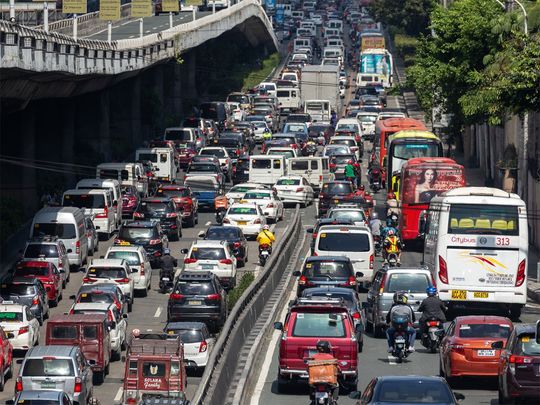
Transportation, a backbone of modern society, facilitates the movement of people and goods across the globe. It is fundamental to supporting economic growth, creating jobs, and connecting the public to essential services including education and health care.
Involving road, rail, air, and marine movement, as people and goods move faster and farther, it costs the environment.
Reports claim that domestic and international transport contributes 20 per cent of global greenhouse gas (GHG) emissions. As the need for mobility grows, these emissions will increase by 60 per cent by 2050.
Sustainable Practices
To foster inclusive growth, expand access to essential services, and combat climate change, imbibing sustainable transport practices is a must for a transformative journey.
As Barack Obama, the former President of the United States said, “We are the first generation to feel the impact of climate change and the last generation that can do something about it.”
The World Bank is working with countries to provide safe, clean, efficient, and inclusive mobility to reduce the climate impact of transport. It is assisting to expand sustainable options, especially in low-income and vulnerable communities to bolster social inclusion and human development.
Its approach includes avoiding unnecessary motorised travel for people and goods, shifting to cleaner transport solutions, improving infrastructure and services, and strengthening the system to enhance the potential of transport.
However, the challenge lies in transitioning from traditional, fossil fuel-dependent modes of transport to sustainable alternatives without disrupting the daily routine and commercial gains. For this, balancing economic growth with environmental stewardship and social obligations is essential.
Read more by Dr Abdullah Belhaif Al Nuaimi
Government And Public Initiatives
Policy and planning by governments are crucial in promoting sustainable transportation. These include Incentives for purchasing electric vehicles (EVs), ambitious investments in high-quality public transit infrastructure, and urban planning that prioritises non-motorised transport options.
Cleaner technologies, supported by cycling and walking, and reinforcing intermodal initiatives, especially those that create pedestrian-friendly spaces linked to public transport, can help to achieve climate targets.
Since sustainability is not merely a policy issue, the commitment of each individual can do a total turnaround in targeting eco-friendly practices in line with the Paris Agreement and other global goals. By opting for public transport and carpooling, individuals can contribute to a greener future.
To foster such a culture, education and awareness of restructuring in the sector are vital.
Innovations In Transportation
Electric vehicles — Gaining popularity due to advancements in battery technology and charging infrastructure, EVs have zero tailpipe emissions and offer a cleaner alternative to internal combustion engines.
Heavy-duty vehicles (HDVs) — Private companies are taking initiatives to produce and prototype zero-emission HDVs and committing to carbon neutrality. Stringent fuel-efficiency standards are crucial for freight transport, which consumes more energy.
Public transport — These reduce the number of individual vehicles on the roads, leading to less traffic congestion and lower emissions. Globally, governments are investing in rapid transit buses, light rail, and subways to make public transit appealing.
High-speed rail — These offer a fast and efficient alternative to air travel,significantly reducing carbon footprint.
Bicycles — Encouraging people to use bikes — easy to integrate into existing urban landscapes — reduces traffic and emissionsand leads to a healthier lifestyle.
Astounding Figures
At a time when global emissions must decrease, transport emissions are on the rise, especially due to the greater volume of travel.
Importantly, transport was referenced for the first time in the COP28 (held in the UAE in 2023) outcome. The decision on the global stocktake called on parties to “accelerate the reduction of emission from road transport on a range of pathways, including through the development of infrastructure and rapid deployment of zero and low emission vehicles.”
The UAE’s share of transportation emissionswas then about 21 per cent. It is likely to soon increase to over 30 per cent.
The global transport emissions, 72 per cent of which came from road vehicles, accounted for an 80 per cent rise from 1970 to 2010. It also increased due to international aviation and shipping.
Global energy-related CO2 emissions grew by 0.9 per cent to over 36.8 billion giga tonnes (GT) in 2022. It increased by 1.1 per cent, to reach a new record high of 37.4 GT in 2023.
According to Investopedia, the top five countries that produced the most CO2 in 2023 were China, the United States, India, Russia, and Japan.
Energy use in transportation is slated to rise in developed and developing countries. However, the sector’s reliance on fossil fuels must shift dramatically to be consistent with a trajectory of limiting global temperature increase.
Countries must specify their transport sector targets and plans and address the opportunities in their long-term strategies.
As British broadcaster and historian, Sir David Attenborough stated at COP26 in Glasgow, “If working apart we’re a force powerful enough to destabilise our planet, surely working together we are powerful enough to save it.”
(In the next article, the author will delve deeper into former US President Donald Trump’s election speech about ending the electric vehicle mandate)
Dr Abdullah Belhaif Al Nuaimi is Chairman of the Advisory Council of the Emirate of Sharjah.









